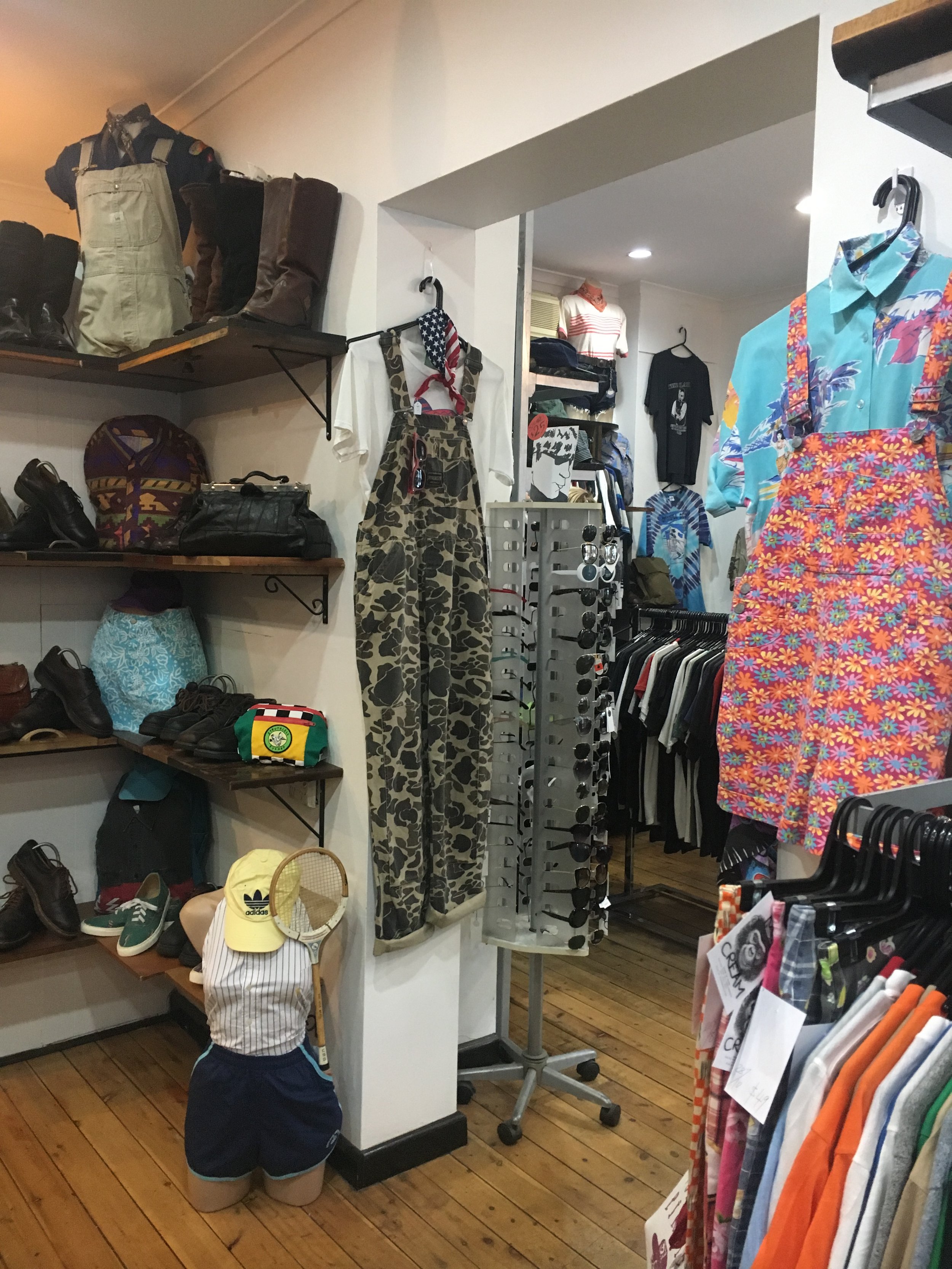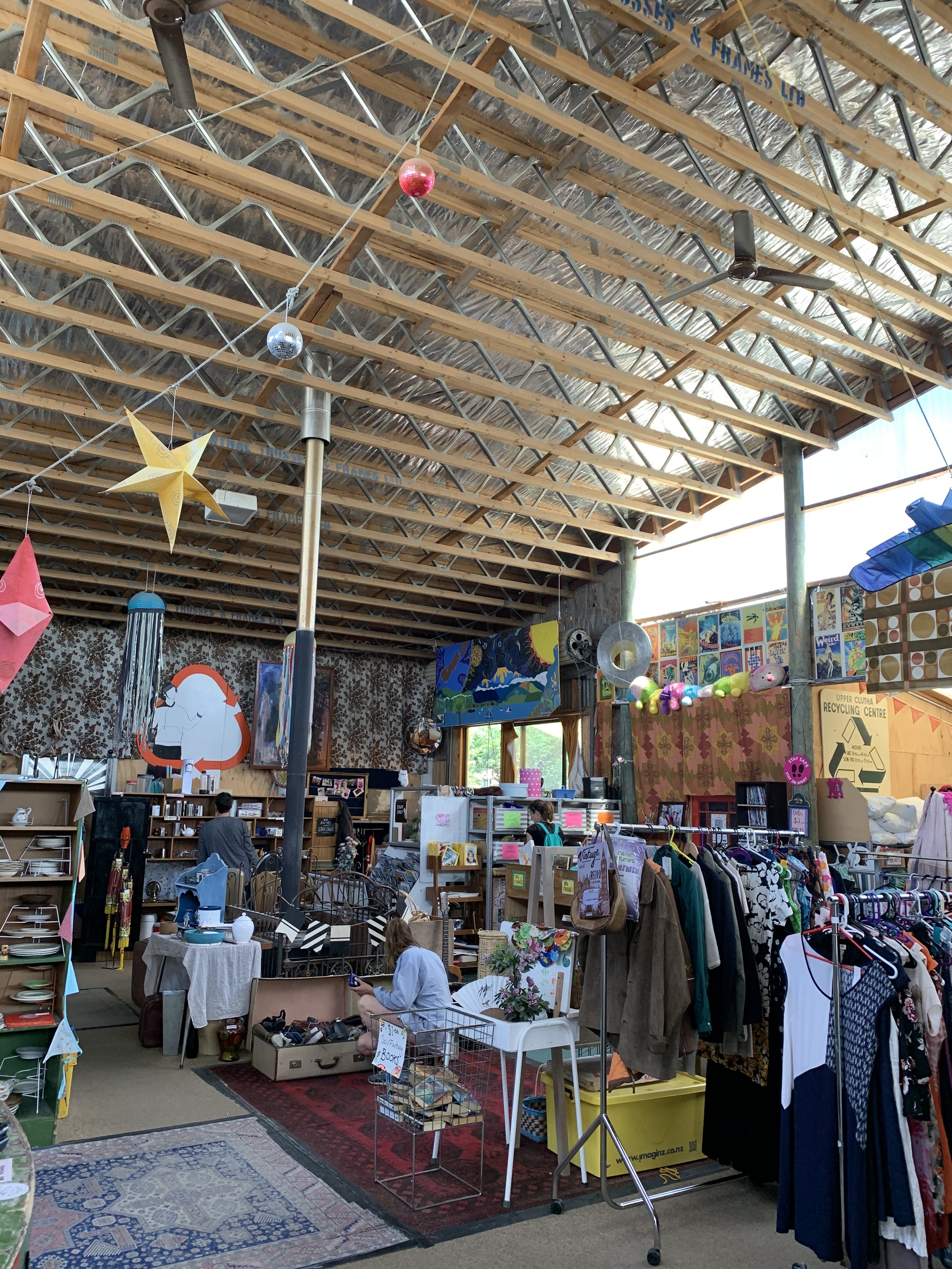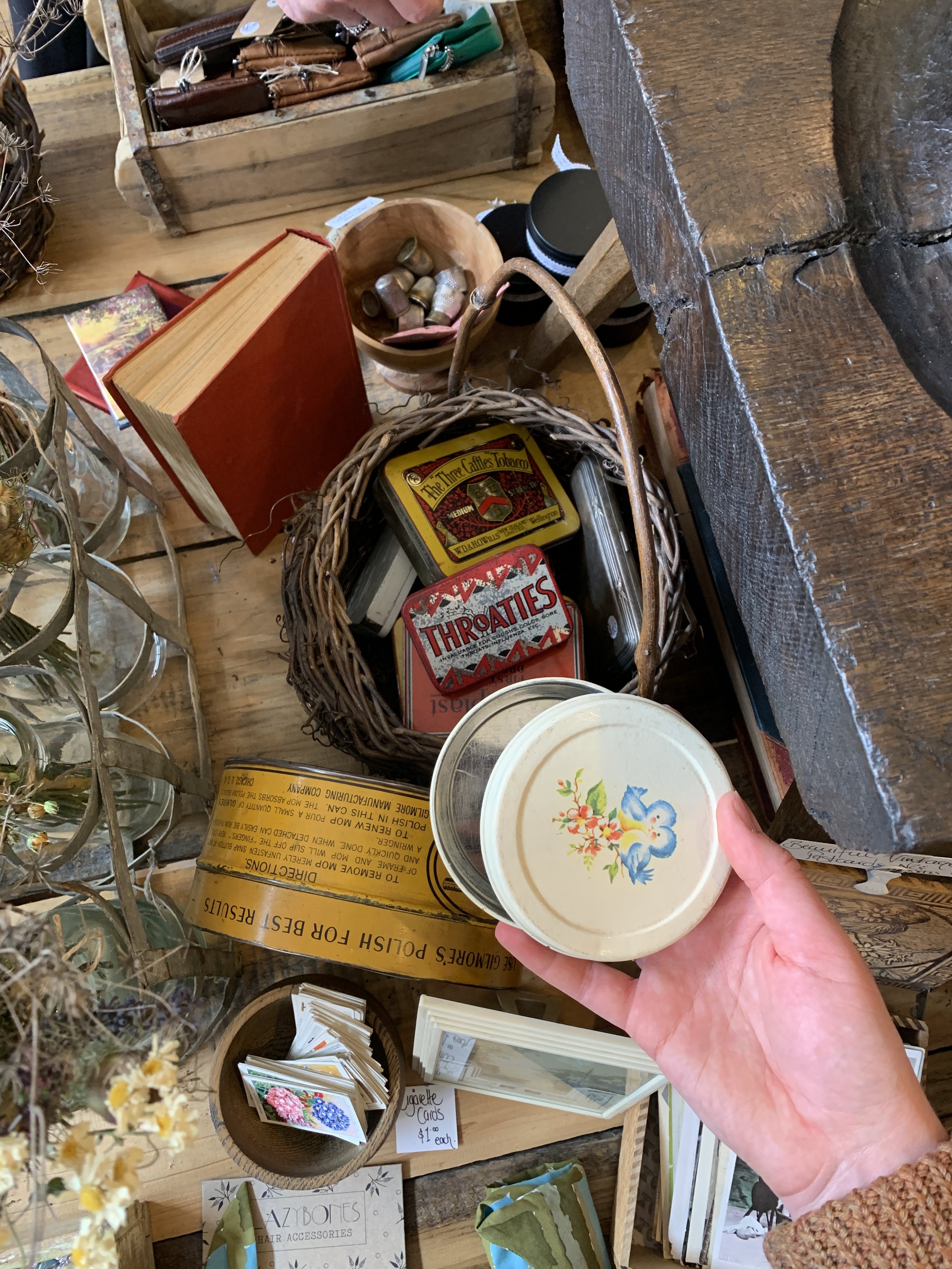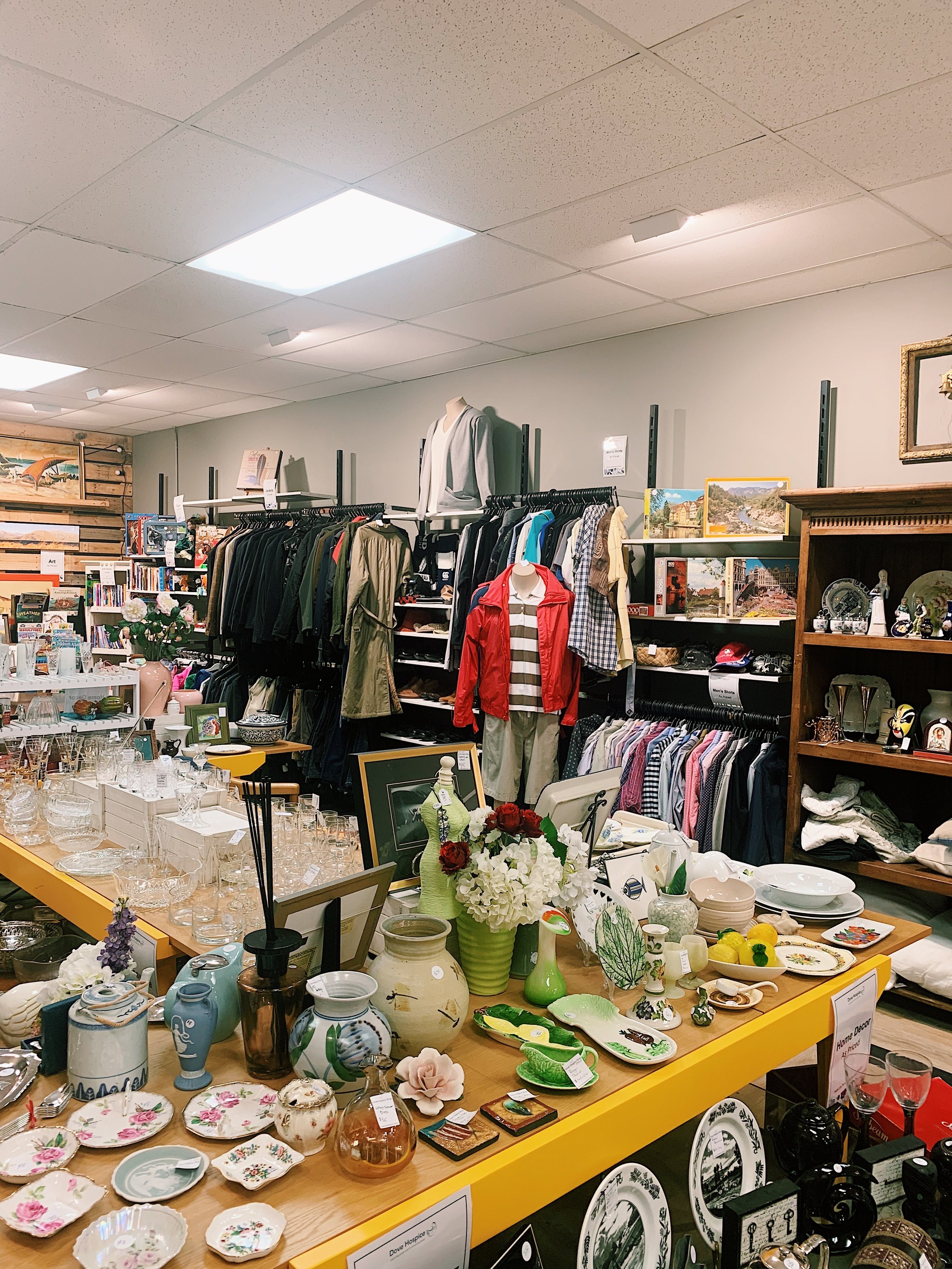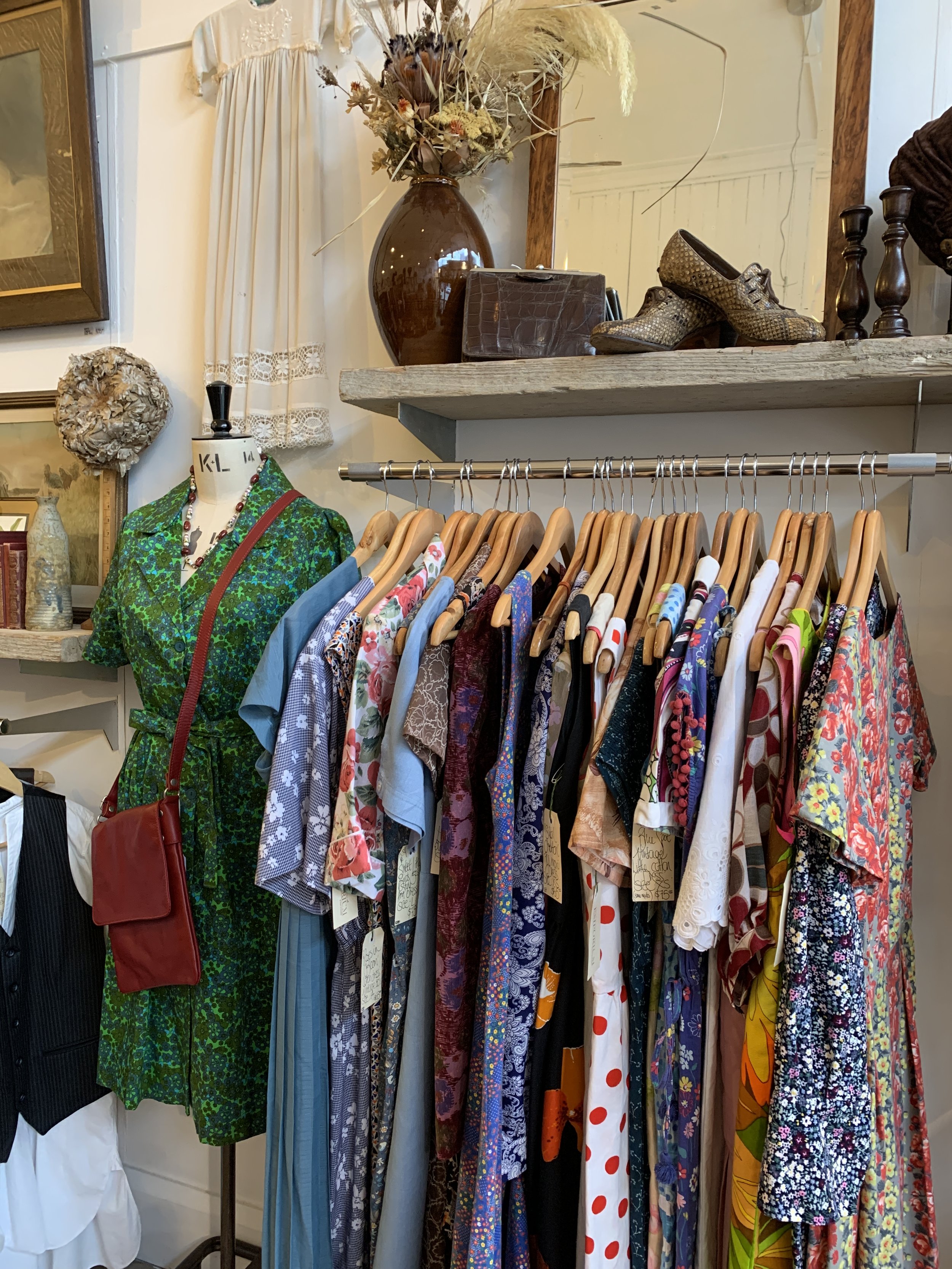How To Donate Stuff Responsibly
I used to be that person who dropped their donated goods off when the second hand shop was closed so I didn’t risk having my items turned away. When I declutter, I want things gone ASAP from my life. I don’t want them taking up space in my house. I need them to disappear. So my tactic of sneaky donating worked a treat.
Now, I cringe at the thought of ever doing that again. My previous self treated second hand shops like a dump who should be grateful for the things I am donating (even if they’re slightly broken). It’s embarrassing to admit this, but I needed to get that off my chest before I launch into responsible donating techniques and how we can improve our second hand systems.
In Australia, Salvation Army alone spends $6 million annually on landfill fees. It’s not uncommon for a second hand shop to only sell on 1 out of 10 clothing items that are donated - and keep in mind these landfill costs mean less money for the charities that these second hand shops exist to serve.
Donating items to second hand stores and charities must be thoughtful and strategic. We cannot keep treating our second hand stores like free dumping grounds and we MUST improve our Op-Shop etiquette.
Here’s how!
Repair
Before anything is donated, it needs to be in working condition. I’m talking about that watch that looks epic but doesn’t tell the time, the lamp that needs a little cable restoration, and those shoes with the worn out soles. Second hand shops generally do not have the time, skills or systems to repair items before selling. The better condition an item is in, the more likely it is to be sold.
Fix the buttons on that shirt.
Test those kitchen scales before donating them.
Do not donate anything that is in need of a repair. Take your time to assess each of your unwanted items - fix what you can yourself or find a local repair shop to do it for you. If it’s unfixable, scroll down to our sustainable disposing tips.
Clean
Again, second hand stores do not have laundromats attached to them! Even though most avid second hand shoppers can see past stains and marks, a simple wash before donating can speed up a sale and get stock moving.
Before I donate things to second hand shops, I think “would I be comfortable gifting this item to a friend?” I would never give my friend a dirty item! Gross. So if the answer to this question is “yes” then I know my item is ready to be donated.
Match & Label
A few years ago I volunteered at a second hand shop sorting warehouse. Every time I opened up a bag of stuff and laid everything out on the sorting table, I mentally thanked the person who thoughtfully packed it or cursed them under my breath because of the extra time and energy I was about to spend sorting. Jigsaw pieces were strewn throughout the bag contents, earrings were separated, and headphones were twisted throughout the bag like messy spaghetti. This experience taught me the importance of organising, matching, and labelling items in a box or bag before dropping them off. The sorters at most second hand shops are volunteers! So taking only a few moments to sort things can save their time dramatically.
Label items that are not obvious (e.g. some kitchen appliances are hard to determine what they are)
Pair jewellery in tiny bags or use string to keep them together
Wrap string around pairs of shoes or donate them in a closed shoe box
Consider the season & read the signs
Second hand shops generally have a sign at their donation drop-off point indicating items they need and items they are not currently accepting. READ THIS SIGN! These signs exist for a reason; second hand shops cannot store an endless amount of stock. There simply isn’t enough space! Get into the habit of reading the sign first and taking any items out of your boxes and bags that do not comply with their requests. Additionally, use common sense to donate items at helpful times of the year. For example, do not donate winter items at the start of summer and do not donate Christmas items at the start of January.
Be honest: dispose of it instead
If the item is unrepairable and cannot be cleaned to a standard that you would personally feel comfortable purchasing, do not donate it. Accept that it’s waste and do your best to dispose of it responsibly.
E-waste
Your local recycling site most likely has an e-waste collection point. If not, search on your local community page (often on Facebook) for answers.
Textiles
Avoid throwing any unrepairable clothes in the bin! There are so many uses for them. I cut mine up and use them as vegetable ties in the garden, rags in the home, or as stuffing for cushions, dog beds, and foot stools. If that isn’t your jam, ask your local mechanic or dog shelter if they need rags (my local mechanic buys rags for $30 a bundle!). I’ve turned old underwear into toys for my dog and repurposed old socks to make hand protectors when I use a jar as a reusable cup. If you are in Aotearoa New Zealand have cotton clothing that can be recycled, use Little Yellow Bird’s textile recycling scheme.
NOTE: If you’re considering throwing textiles in the metal ‘clothing bins’ we see around some communities, think again. Depending on the bin you drop your unwanted garments in, a few things may happen:
Re-sold through SaveMart (this organisation is known to exploit their workers and make far more profit than they donate to charity)
Sent overseas to become part of the rag trade in The Pacific. The margins made on rags are so small that most garments pile up and become someone else’s waste problem
Landfilled
Occasionally a bin will be governed properly & some of the items will be sold or passed on to businesses who need rags
Because of overflow issues and dumping, the classic metal clothing bins have been phased out in many councils around Aotearoa New Zealand. If you still have one in your local community, leave it. Take responsibility to re-home your rags or quality clothing yourself. Whatever you do, don’t do this:
Appliances
Kindergartens often love old appliances that no longer work but are still safe for use! I have donated things like old mobile phones and kitchen appliances to preschools and kindergartens who get lots of use out of them in their play areas.
Bedding
Linen & bedding items like blankets, duvets and towels that are not in a nice enough condition to pass on to another human, can still provide great value for animals. Ask your local animal shelter if they are in need of any blankets or towels that might not be might the cut for secondhand shops.
Glass Jars
Ever gone to the bulk bin and taken too few jars? Instead of stashing all those glass jars in a drawer or dropping them at the curb side, take a few spares to your local bulk bin. Most have a basket or box where people can grab spares for free if they need more. If not, put a picture on your local ‘buy, sell, trade, swap’ Facebook page. Bottlers, jam makers, and crafters are always eager to pick them up!
Crafts
Old books and magazines that are not in adequate condition to pass on make great scrapbooking and card making material. Creating personalised cards and messages from old books makes gifts unique and saves waste. High school art classes and primary schools can also get a lot of use out of spare material like this. Get in touch with art departments and ask what could be of value.
Silicone Gel Packets
Those little packets of plastic pearls that come in vitamin bottles and boxes of brand new shoes can continue to serve a purpose. As they continue to absorb moisture, they are great for keeping in the back of the closet with the winter clothes, in a pocket of your gym bag, or in photo/memory boxes to avoid mould and mildew.
Garden Gear
Small scraps of cotton from old shirts, odd wires and clips can all make handy support ties for plants in the garden. Buckets, crockery and even old gumboots can also make great seedling pots, just drill a few holes in the bottom for drainage. You’ll have the funkiest looking upcycled garden in town!
Plant Pot Swaps
Most gardening centres like plant barns have pot swap boxes where you can drop off seedling trays and plant boxes and take ones that you need for free. These pot swap boxes are usually located near the entrances of the shops so are accessible to anyone.
Tools and Hardware Material
Those odd bits and bobs hiding in the garage can often be hard to find new homes for, so here are a couple of ideas. TheMen’s Shed is a nationwide charity with locations all around the country where retired folk can be part of creative projects and are commissioned for work from their local communities too. These spaces provide work opportunities and a community for their volunteers - they also often rely on donations. There are several ‘Men’s Sheds’ around the country which you can find here; your local may be open or in need of tool and material donations. There are also more Tool Libraries popping up around the country, so see if your town has one that will take donations. This way your old tools can serve not just one home but a whole community.
The Minimalist Game
If you are looking to declutter your home, attempt the Minimalist Game! Find a friend and choose a month. During that month, give away the amount of things that correspond to the date. On the first of the month, give away one thing. On the 2nd of the month, give away two things. On the 27th of the month, give away 27 things. You get the picture?
The rules state that the items must be gone from your life by midnight of each day, but if you do not have the time and capacity to do this, store everything out of sight and re-home the items responsibly when your month is over.
Tim, my husband, and I completed The Minimalist Game in April 2018. It was one of the best things we ever did! After the month we had a garage sale and then donated everything to a local second hand store. We used the tips in my guide above to ensure everything was thoughtfully donated and there were even people purchasing things off our trailer as we arrived at the donation drop off point.
To conclude, don’t be like past me. Don’t drop your things off to second hand shops in the middle of the night so that you no longer have to deal with them. Don’t avoid fixing something simply because it’s not of use to YOU. Donating items is not a time to be selfish. It’s a time to be selfless and responsibly donating items is the only way you can do this without simply transferring the burden of unsellable items from yourself to a charity.

